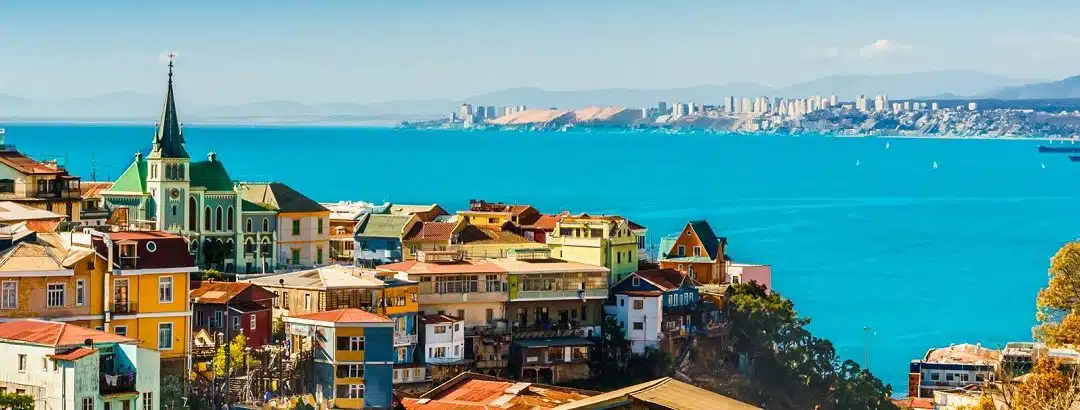admin | 17/11/2020
With the testimony of Manoel Renato Machado, member of the Special Secretariat of the Investment Partnerships Program (SPPI) and the collaboration of the Spanish Office for Economic & Commercial Affairs in Brasilia, we address the situation and perspectives of the sector, which is in a process of opening to private participation driven by a new regulatory framework, bringing it closer to the goal of achieving universal service in 2033, established in the National Basic Sanitation Plan.

The transfer from the San Francisco River, in the Northeast area of the region, to a set of artificial canals benefits more than 390 munic-ipalities in with 12 million inhabitants, who suffer the impact of recurring droughts.
Despite being one of the largest countries in the world and having extensive water reserves, the supply rate throughout the Brazilian territory is 83.6%, the sanitary sewerage rate is 53.2% and only 46% of wastewater is treated. In part, the explanation for these figures is found in the region’s own idiosyncrasy, as explained by the Spanish Office for Economic & Commercial Affairs in Brasilia. “The overall picture of the country’s water resources is characterized by the uneven concentration of water, with the North accounting for 68.5% of the total. In addition, the majority of the population is concentrated in large cities in the South and the Southeast, the most economically developed areas, and also those with a lower rate of water availability. Therefore, these regions are subject to significant water stress, which frequently leads to supply cuts in metropolises such as Sao Paulo, Rio de Janeiro, and the Federal District,” they explained.
A heterogeneous system
Neglected households are concentrated in the peripheries of large cities, in urban irregular settlements and in rural areas, where only 28% have access to the general network. “The specific situation of the Northeast deserves to be highlighted,” added Manoel Renato Machado, a member of the SPPI, “a semi-arid region characterized by irregular rainfall, where intermittence of rivers predominates, with a reduced flow during long periods of the year, resulting in limited and irregular access to water for priority uses such as human supply.” To alleviate the issue, initiatives are being carried out, such as the transfer from the San Francisco River to a set of artificial canals benefiting more than 390 municipalities with 12 million inhabitants, or the construction of large water infrastructures.
In large Brazilian cities, there is an optimal water supply, but a deficit in wastewater collection and treatment services. “The biggest problems in these cities are associated with disorganized dwellings, peri-urban communities, favelas and, especially, dwellings in the valley floor. There is where the lack of sewers is located,” explained Manoel Renato. “These places have many difficulties in serving the population, since the relevant infrastructure is expensive, and there are difficulties related to land regulation and the lack of space to implement solutions.”
In rural areas, the situation is even more precarious, with only 28% of households having a public water supply. “In less populated areas, individual solutions such as wells and small springs for supply and septic tanks for wastewater treatment are concentrated,” Machado said.
Floods and droughts
Between 2003 and 2018, 48.8% of Brazilian municipalities declared a state of emergency at least once due to rising waters. In order to deal with both critical situations, Manoel Renato divides the actions into two main lines: preventive and mitigation. “For disaster prevention, investments—mostly public—are made in large infrastructures, technical training, acquisition of equipment for civil defense (federal, state and municipal) and climate monitoring systems to predict extreme events. Among the infrastructure network, it is worth noting the construction of dams and reservoirs that can act both to reduce flooding in periods of intense rain and to store water for use in periods of drought,” he says.
Climate aridity is especially severe in the Northeast area of the region where, as the expert says, “there are a large number of adequate reservoirs, dams and water reservoirs but lack an efficient operation and maintenance program and, mainly, integration mechanisms that allow more flexible management.” In addition to this situation is one of the major errors in resource management: the high level of water losses that, according to the latest study by Trata Brasil in 2019, for every 100 liters of water collected and treated to be distributed, 38 are lost due to leaks, reading failures, theft. and other reasons. “Indeed, the loss rates in the supply systems are very high,” Machado confirmed. “In 2018, according to data from the National Sanitation Information System (SNIS), 38.5% of treated water was lost in public distribution systems. Measures such as the implementation of macro and micro measurement, surveillance programs, network sectorization and user re-registration may be, among others, important measures to combat these losses. But to implement them regularly and in a timely manner, it is necessary to improve service management and increase investment.”
Openness to private participation
Until now, the provision of sanitation services in Brazil was mainly in the hands of local governments. State companies supply 71% of municipalities, while municipal entities serve 24%. The rest is in the hands of private companies that, with this new regulatory framework approved last July, would see their participation increased thanks to a process of opening to investment. “With this new legal context, a significant change in service delivery is expected from now on,” Machado said. This law will attract large investors and bring the region closer to the goal of universalizing the service.
“The favorable climate promoted by the new legal framework and by the Investment Partnerships Program (PPI) encourages the private sector to participate in opportunities such as wastewater treatment or the application of new technologies, showing that Brazil is an attractive scenario for companies interested in starting or deepening their process of internationalization. In addition, the Ministry of Regional Development (MDR), through the National Sanitation Secretariat (SNS), has several programs aimed at improving the quality of urban services. The promoters of these projects are the municipalities or prefectures of municipalities that, with the help of financing and loans from state and multilateral origin, call private companies to carry out the services tendered,” they point out from the Spanish Office for Economic & Commercial Affairs in Brasilia, which estimates an increase in investment and greater competition in the market, which will result in a better quality of the service provided. “The main objective of the legislation is to structure an environment of legal security, competitiveness and sustainability, in order to attract new investment. In addition, it allows the conclusion of block service contracts, grouping cities so that neighboring municipalities may take part in the same bidding process. Agglutination and regionalization will make these blocks more attractive for private investment,” they concluded. For the remainder of the year, six auctions are planned with a value of 45.9 billion reais (just over 7.2 billion euro).
Challenges and perspectives of the sector
The main objective of Brazilian institutions, established by the National Basic Sanitation Plan, is to achieve universalization of the service within thirteen years. While the new regulatory framework sets out a channel for investment inflows, Manoel Renato Machado says that the success of the strategy depends largely on regionalizing services to serve the poorest populations, through the application of subsidies provided by the public sector. “In water resources management, it is necessary to improve institutional articulation between the different spheres of government and the integration of different public policies, such as the National Water Policy, the National Sanitation Policy, the National Environmental Policy, and Urban Development Policies, among others,” he said.
“As for institutional coordination, it is essential for the use of hydraulic infrastructures built to supply water to regions with water scarcity, such as the PISF Water System (Projeto de Integração do Rio São Francisco), whose operation relies on the commitment of the various federated entities (the Union and the four States receiving its waters) to operate and maintain the company. Without this coordination, there is a risk that the company will not perform its role in society. To overcome this challenge, it would be necessary to strengthen the institutions responsible for the water sector in the different spheres of government”, he said.
For its part, the Spanish Office for Economic & Commercial Affairs points out that sectoral companies “are constantly looking for new cost-effective methods and innovative technological solutions,” so “products and services aimed at incorporating advanced technology without compromising capital investment constitute an interesting market opportunity,” in addition to the need to look for sustainable solutions such as water recycling to meet industrial demand, for example,”, they concluded.
Article collaborators:
 Manoel Renato Machado Filho, Director of the Program of the Secretariat for Promotion and Support for Collaboration with Federal Entities of the Special Secretariat of the Investment Partnerships Program. Master in Public Health from the University of Sao Paulo (USP), with postgraduate studies in Public Health Engineering and a Graduate in Geology from the University of Brasilia.
Manoel Renato Machado Filho, Director of the Program of the Secretariat for Promotion and Support for Collaboration with Federal Entities of the Special Secretariat of the Investment Partnerships Program. Master in Public Health from the University of Sao Paulo (USP), with postgraduate studies in Public Health Engineering and a Graduate in Geology from the University of Brasilia.
Background: Member of the career of Specialist in Public Policies and Government Management of the Ministry of Economy. Federal Public Servant since 1990. Geologist and Sanitary Engineer at the National Health Foundation and Ministries of Health, Cities and Planning, holding positions as Director of Social and Urban Infrastructure (MPDG), Director of the Department of Development and Technical Cooperation. Deputy Director of Public Health Engineering (FUNASA); National Project Manager of the National Health Card (MS); General Coordinator of Sanitation Projects and Health Buildings (FUNASA). Member of the Board of Trustees of FGTS between 2016 and 2018, representing the MPDG.
Spanish Office for Economic & Commercial Affairs in Brasilia (State Secretariat for Commerce of the Ministry of Industry, Commerce and Tourism).





